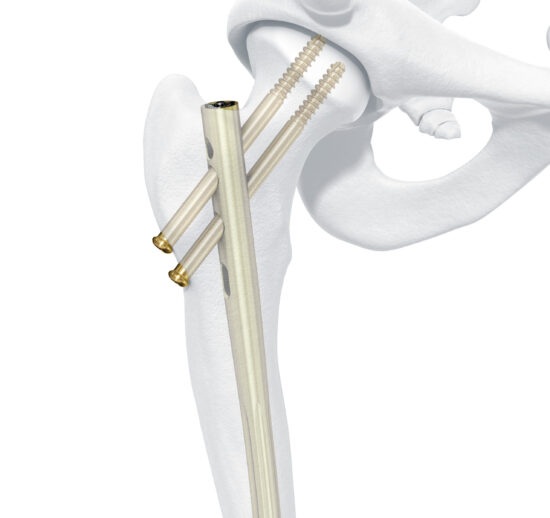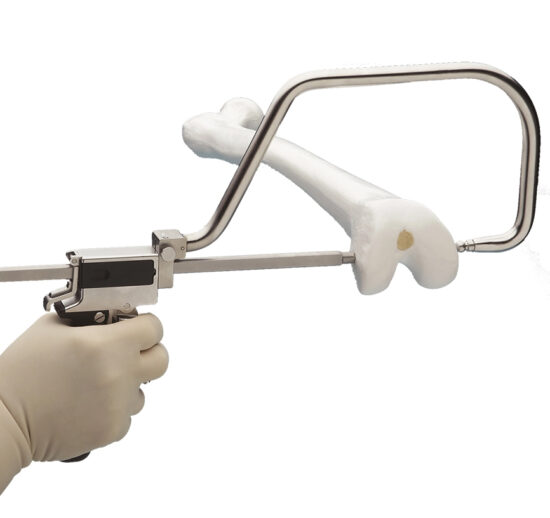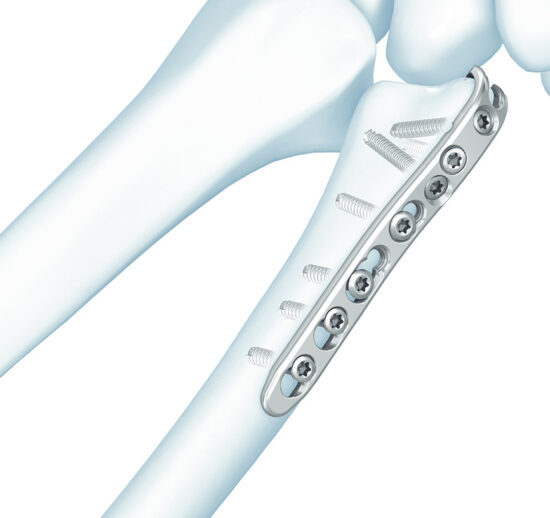The Pediatric LCP® Plate System is designed for stable fixation of varus, valgus or rotational osteotomies and trauma applications in pediatric orthopaedics and is designed to meet the specific requirements of pediatric orthopaedic surgery.
The Pediatric LCP Plate system offers a wide range of locking compression plates along with a surgical technique specifically developed for the pediatric patient. The Pediatric LCP Plates have a universal design for the left and right femur. The head of the plate features threaded holes for locking screws that either angle into the femoral neck or angle parallel to the growth plate in the distal femur in place of the traditional angled blade.
In the proximal femur plates, an additional, diverging calcar screw ensures increased fixation in the bone. The 100 ̊ and 110 ̊ plates are designed with an offset for osteotomies. The 2.7 mm plates have a 6 mm offset, the 3.5 mm plates have an 8 mm offset and the 5.0 mm plates have a 10 mm offset.
Plate shafts feature limited-contact profiles and Combi holes. The Combi hole combines a dynamic compression unit (DCU) hole with a locking screw hole. Combi holes provide the choice of axial compression and locking capability throughout the length of the plate shaft.




